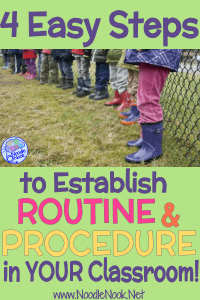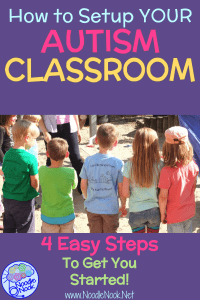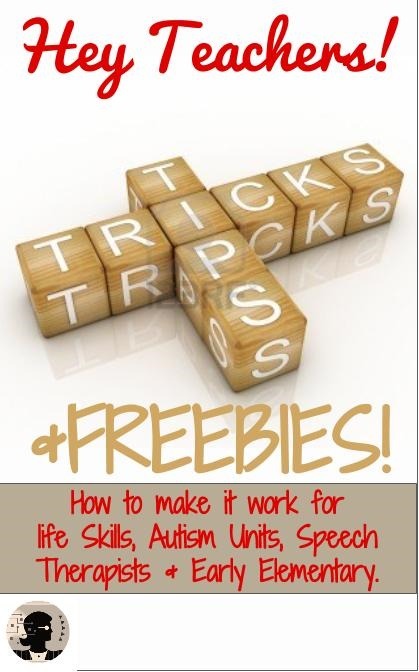Routine and Procedures
If you are teaching in a structured classroom, you know how important routines and procedures can be. When there is no plan, it is a slippery slope to inappropriate behaviors, students who are totally not engaged, extra stress on you, and some pretty long days.
When you put good systems in place, then your class will run smoother, guaranteed.
It is easy to see that pie in the sky as effective, but it is a whole nother thing to actually put the systems into action. When you decide on routine and procedures that you need in your classroom, there are 4 easy steps you can work through to establish them.
1. Pre-teach Expectations
In the very beginning, your students will probably not know what to do or remember what you wanted, even if you just did it this morning or yesterday. Before you even start to work through the routine, pre-teach the expectations with a little speech. Here is a great example:
“When I ring the bell, I want you all to line up at the door.”
Basically, we are helping our students to mentally walk through what’s coming before it even happens. It also gives you a chance to model the steps where possible. In the above example, you may ring the bell as YOU physically walk over and line up at the door. Giving that audio cue and then paring that with a physical demonstration allows you to really pre-teach the routine and start ready for success.
2. Use a Cue (Audio, Visual, or Signal)
Is it time yet? How ‘bout now? How ‘bout now? How ‘bout now?
Being driven nuts yet?
If you want your students to start in motion and follow the routines you have outlined for your classroom, you have to signal them that it’s time to get it done. That cue can come in a couple of different combinations, but I love to pair a couple together whenever I give a cue to my students.
In the example above, you may ring a bell and also pair a visual for those students who are not able to process language well. That could be by pointing to a visual of lining up or signing ‘lineup’.
Whatever combination you use, you will want the cue to always be consistent. When you want students to line up, especially in the training phase where you are teaching the procedure, you are going to want to cue students the same way every time. Once the procedure is learned with some consistency, then you can start to minimize cues or generalize to other environments.
3. Teach the Entire Chain of Behavior
When we talk about a chain of behavior, it means we are talking about all the little steps that go into a task. When I tell my son to go brush his teeth, I don’t tell him to wet his toothbrush, add paste, brush back and forth, spit, etc. I tell him the task and he performs all the sub-tasks independently. Back in my classroom, I may tell a student to go brush their teeth and signal the routine with a verbal and visual cue… and they may never complete it.
BUT, if I were to break down all the steps with sub-steps and set out a visual as a support, then, with practice, they might.
Learning all those little substeps as a student correctly follows through on a procedure takes some time to train. As you train students, remember the ‘I Do, We Do, You Do’… and show students what you want to do, do it together, and then fade until a student can do it alone. If you are in a class with students with multiple severe disabilities you may be in the ‘We Do’ phase for quite awhile. Stay consistent, it will pay off.
4. Reward and Praise!
Every step of the way, you should be cheerleading like crazy as you establish routine and procedures. When you first signal and you get some student’s attention, praise students for hearing/seeing the cue.
“I like how some of you stopped when you heard the bell- I know there is something you need to do… Great job. What happens when we hear the bell?”
See how even at the very beginning we want to be praising our students at every step, bust out that token economy!
Establish Routine and Procedure, One Step at a Time
So, here it is again, the steps to establish routine and procedures in Autism Units:
- Pre-teach
- Cue
- Set Chain of Behavior
- Reward and Praise
Follow the steps to set your routine… but, a caution: This will not work on day one. It may not work on day two. You may still be teaching your routine and procedures on day ninety-nine to a select few students. The key is to not stop, never stop. You can do it and they can do it… plus once you establish routine and procedures, your job will get infinitely better!
Good Luck… Stay Strong and Teach On!





